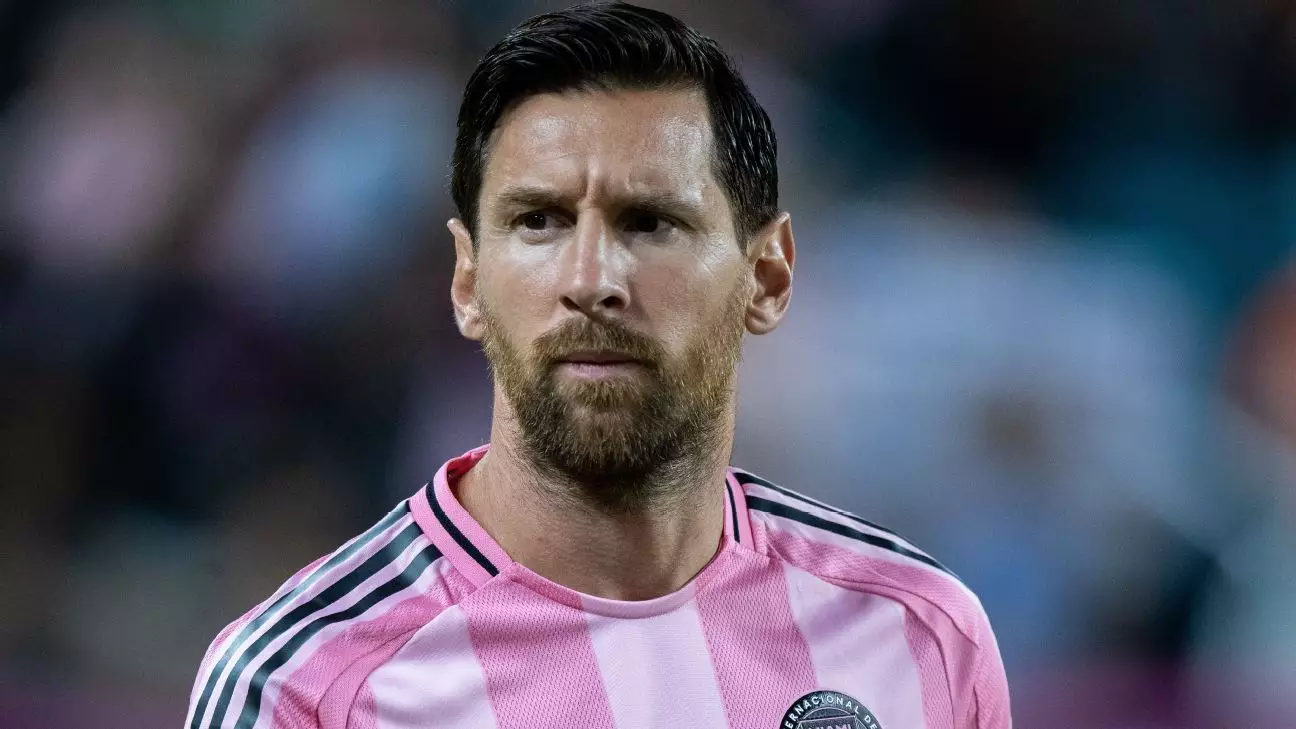Lionel Messi’s impending contract expiration is creating an intense scramble among top clubs and leagues worldwide. Amid a career that has continuously defied expectations, Messi finds himself at a crossroads where legacy, financial incentives, and personal aspirations collide. Saudi Arabian giants, notably Al Ahli, have positioned themselves as serious contenders, reportedly willing to “do whatever it takes” to secure the Argentine icon’s signature. This bold move by the Saudi Pro League signifies more than just a star’s transfer; it reflects Saudi Arabia’s strategic push to elevate its footballing profile by attracting global legends.
However, Messi’s ongoing negotiations with Inter Miami reveal a complex picture of loyalty, branding, and personal legacy. As a brand ambassador for Saudi tourism, his potential move to Al Ahli could serve dual purposes—professional challenge and commercial synergy. Yet, his desire to prolong his impact in Major League Soccer suggests that personal and professional fulfillment still plays a significant role in his decision-making process. This tug-of-war encapsulates a broader trend in modern football: star players balancing lucrative offers with the desire for meaningful, competitive roles.
What makes Messi’s situation particularly fascinating is how it mirrors the broader ambitions of emerging leagues and markets. Saudi Arabia’s aggressive recruitment strategy signifies a paradigm shift—global football is no longer solely centered around traditional powerhouses in Europe and North America. For Messi, choosing between the allure of a new challenge in Asia or maintaining his legacy in North America becomes a defining moment in his illustrious career.
Barça’s Strategic Pivot: Reassessing Targets in a Changing Transfer Landscape
Barcelona’s renewed focus on Manchester United’s Marcus Rashford signifies a calculated shift in their transfer blueprint. With aspirations to bolster their attacking line, the Catalan giants appear to view Rashford not just as a player but as a strategic asset to restore their competitive edge. The shifting dynamics of the transfer market have made negotiations more fluid, especially as Barcelona adapts to their financial realities and long-term strategic goals.
Interestingly, Barcelona’s interest in Rashford reveals a broader narrative—elite clubs increasingly prioritize versatile, English talents who possess both youth and proven goal-scoring credentials. Yet, this pursuit also showcases their awareness of limited options. Long-term targets like Luis Díaz face reduced likelihood, prompting club executives to pivot rapidly. Nico Williams’ recent contract extension with Athletic Bilbao underscores how player loyalty and contractual stability influence transfer strategies.
Furthermore, this focus reveals an underlying philosophy: Barcelona is seeking immediate-impact players to re-establish their dominance. Rashford’s adaptability, proven scoring ability, and rising international profile make him an ideal fit. Still, such negotiations are riddled with complications—from financial demands to Arsenal’s ongoing interest—highlighting the ruthlessness and unpredictability of modern transfer dealings.
Emerging Markets and New Challenges: The Global Race for Young Talent
The summer transfer window is not merely about marquee signings; it’s a battlefield for emerging talent with the potential to reshape team dynamics for years to come. Clubs like Crystal Palace scouting Borna Sosa or Tottenham eyeing Koni De Winter exemplify a strategic shift—clubs are investing in young, promising defenders who can form the backbone of their future ambitions. These signings are driven by the understanding that building a resilient, adaptable squad requires both experience and raw potential.
Additionally, the pursuit of young forwards like Luca Koleosho or Nicola Kühne by clubs across Europe illustrates a keen eye for discovering hidden gems. These investments are often predicated on long-term visions, financial prudence, and strategic squad depth. For instance, Mainz’s negotiations to loan Kawasaki or Newcastle’s interest in Nicolás Fernández emphasize that markets outside of the Premier League and La Liga are now formidable battlegrounds for talent acquisition.
The transfer landscape is also shaped by evolving financial constraints and the growing importance of youth development. Clubs recognize that cultivating talent from their academies or sourcing undervalued players is a sustainable approach amid sky-high transfer fees. As clubs like Lecce and Nottingham Forest demonstrate by signing young prospects on loans or low-cost transfers, modern football is increasingly a game of patience, scouting excellence, and strategic investments.
The New Paradigm: Profit, Potential, and the Global Power Play
This transfer season underscores a broader evolutionary phase in global football—where financial powerhouses, emerging markets, and strategic alliances collide in increasingly sophisticated ways. Big names like Vlahović and Madueke are valued not only for their immediate contributions but also for their resale potential. The market now operates with a clear understanding: a player’s transfer value is a blend of current performance, potential, and geopolitical bargaining power.
The involvement of clubs from Italy, France, and the Middle East highlights a diversified approach to building competitive teams. Napoli’s booking of Noa Lang’s medical, Juventus’ efforts to offload Vlahović, and Al Hilal’s aggressive pursuit of Hernádez exemplify that clubs are deploying multifaceted tactics—free transfers, loan deals, and lucrative buyouts—creating a constantly shifting landscape.
Meanwhile, player movement reflects an increased focus on strategic longevity. Contracts are extending—like Wojciech Szczesny’s new two-year deal—and emerging stars like Francesco Camarda are gaining invaluable experience via loans. This balancing act between immediate impact and long-term growth reveals an understanding: football, at its core, remains a game of both fleeting moments of brilliance and calculated future planning.
The transfer window thus manifests not just as a fluctuation of players between clubs but as a reflection of shifting power dynamics. Wealth, ambition, and strategic foresight determine who rises and who falls in this relentless race to dominate European, Asian, and American markets. Football is evolving into a global chessboard, where each move is carefully calculated to maximize influence, financial return, and sporting success, reminding everyone that in the modern game, adaptability and vision are paramount.

